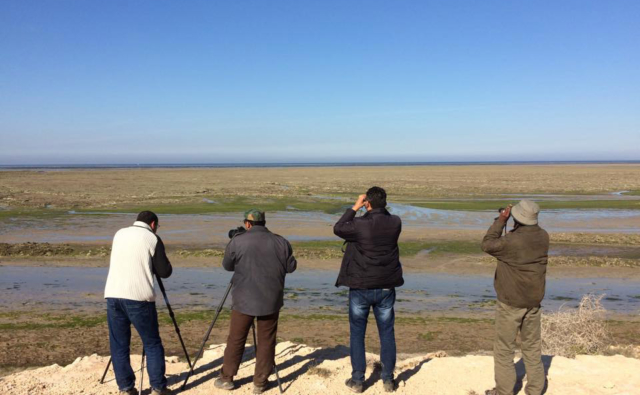Cet article vient d’être publié dans la revue Ecology and Evolution. Il s’inscrit dans le cadre du doctorat de David Vallecillo.
Vous pouvez le retrouver sur le portail documentaire de la Tour du Valat.
 Il traite des erreurs de comptage lors du recensement de groupes d’individus, en fonction de la fréquence de changement d’observateurs, et les conséquences sur la capacité à évaluer les tendances d’évolution. Cet article questionne en particulier la pertinence d’utiliser des seuils précis de taux d’évolution des effectifs comme indicateurs stricts de l’état de conservation des populations.
Il traite des erreurs de comptage lors du recensement de groupes d’individus, en fonction de la fréquence de changement d’observateurs, et les conséquences sur la capacité à évaluer les tendances d’évolution. Cet article questionne en particulier la pertinence d’utiliser des seuils précis de taux d’évolution des effectifs comme indicateurs stricts de l’état de conservation des populations.
David Vallecillo est doctorant, co-encadré par l’OFB et la Tour du Valat. Son sujet du doctorat est la modélisation de la répartition spatio-temporelle des oiseaux d’eau en Camargue – un outil pour la gestion.
Résumé :
- Population time series analysis is an integral part of conservation biology in the current context of global changes. To quantify changes in population size, wildlife counts only provide estimates because of various sources of error. When unaccounted for, such errors can obscure important ecological patterns and reduce confidence in the derived trend. In the case of highly gregarious species, which are common in the animal kingdom, the estimation of group size is an important potential bias, which is characterized by high variance among observers. In this context, it is crucial to quantify the impact of observer changes, inherent to population monitoring, on i) the minimum length of population time series required to detect significant trends and ii) the accuracy (bias and precision) of the trend estimate.
- We acquired group size estimation error data by an experimental protocol where 24 experienced observers conducted counting simulation tests on group sizes. We used this empirical data to simulate observations over 25 years of a declining population distributed over 100 sites. Five scenarios of changes in observer identity over time and sites were tested for each of three simulated trends (true population size evolving according to deterministic models parameterized with declines of 1.1%, 3.9% or 7.4% per year that justify respectively a “declining,” “vulnerable” or “endangered” population under IUCN criteria).
- We found that under realistic field conditions observers detected the accurate value of the population trend in only 1.3% of the cases. Our results also show that trend estimates are similar if many observers are spatially distributed among the different sites, or if one single observer counts all sites. However, successive changes in observer identity over time lead to a clear decrease in the ability to reliably estimate a given population trend, and an increase in the number of years of monitoring required to adequately detect the trend.
- Minimizing temporal changes of observers improve the quality of count data and help taking appropriate management decisions and setting conservation priorities. The same occurs when increasing the number of observers spread over 100.
Référence bibliographique : Vallecillo D., Gauthier‐Clerc M., Guillemain M., Vittecoq M., Vandewalle P., Roche B., Champagnon J. 2021. Reliability of animal counts and implications for the interpretation of trends. Ecology and Evolution Online:. DOI : http://dx.doi.org/https://doi.org/10.1002/ece3.7191



